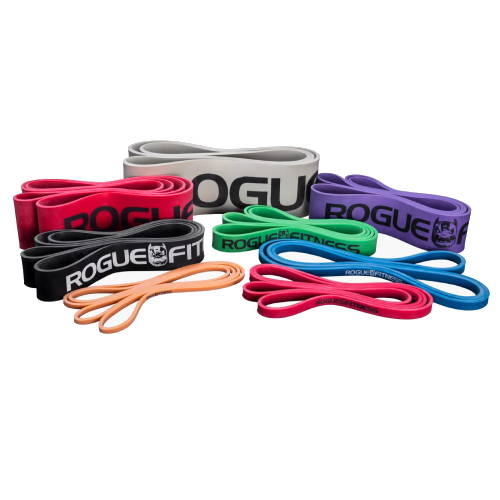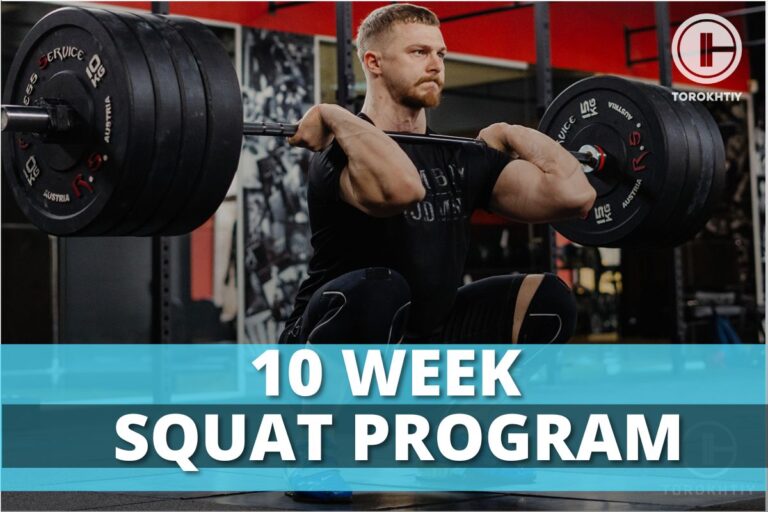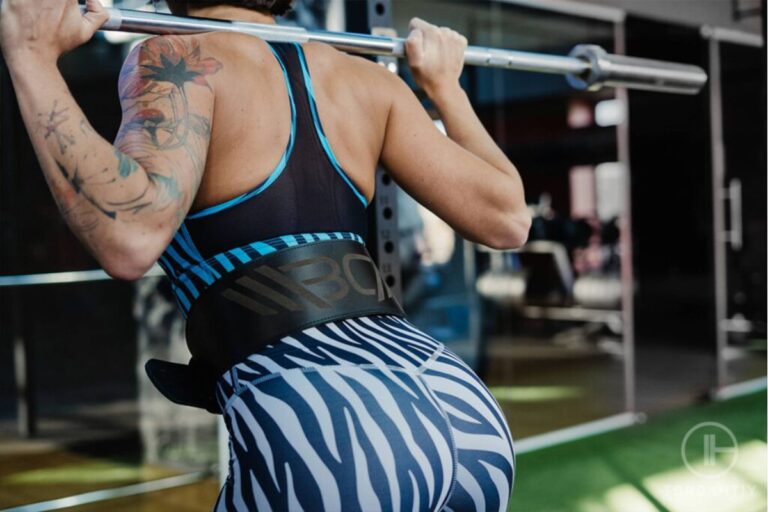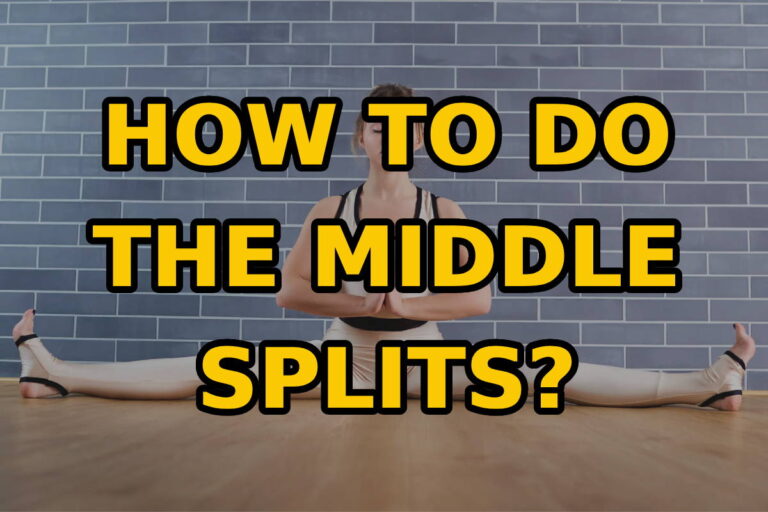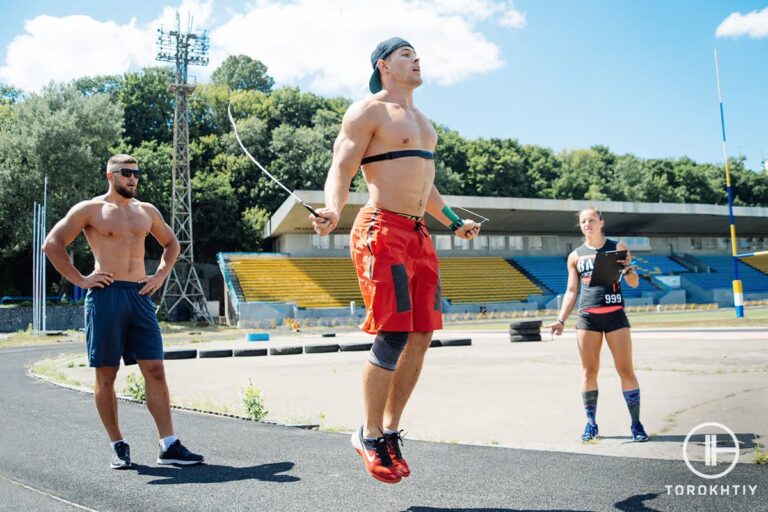Squats with Resistance Bands
If you want to put on lean muscle mass and increase your strength, a pretty convenient way to do that would be by performing squats with resistance bands.
Squats are perhaps the most popular bodyweight exercise, but a bodyweight squat isn’t challenging enough for everybody.
If regular squats aren’t tough enough, squats with resistance bands will make your workouts more challenging and effective. All you need to do is wrap the bands above your knees in a way that it is not too tight or lose, and get squatting.
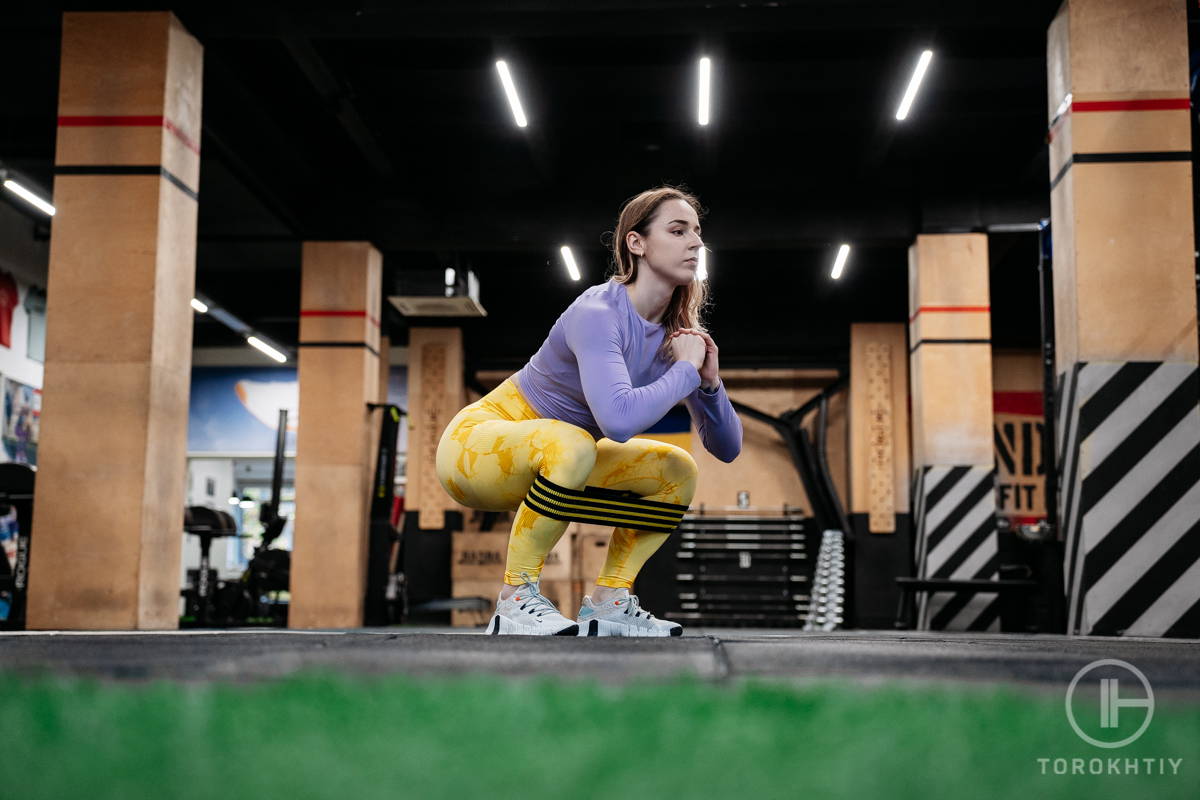
How to Do A Squat with Resistance Bands: Guide
These are called banded squats, and there are multiple ways to perform a banded squat. Before you perform a banded squat, you should know that you have to keep your core engaged throughout the repetition. Also, the weight should be centered, and your back shouldn’t stoop.
If you have just started squats with bands and the movement seems to be very difficult for you, try squatting without the bands until you develop the strength for it. There’s no point in performing squats with a resistance band if your form is incorrect.
To perfectly perform every move with ease, it will be best to perform the exercise under the physical guidance of a personal trainer. Coming to performing a banded squat, it will indeed make your workouts more challenging. If you’re wondering how to do squats with resistance bands, here’s a step-by-step guide for you.
1. A Step-By-Step Guide to Performing A Standard Banded Squat
- Stand with your toes slightly pointing outwards and feet a little wider than hip-width. The loop should be slightly above your knees. You can keep your hands in front of you or on your hips while you squat.
- Inhale as you begin to go down. Slowly push your hips back and bend your knees as if you’re entering the sitting position.
- Keep going down until your thighs are parallel to the floor. You can also squat deeper (at an angle of 120-140 degrees) if needed, as it poses a greater challenge and leads to better muscle development. Hold that position for a couple of seconds.
- Gradually lift yourself back up into the initial position, pushing from the heels and maintaining your posture. Squeeze your glutes while you do so, and exhale while you get back up.
- Tip: Do not race into the exercise. Go down and get back up in a slow and controlled motion because that’s where you’ll be able to reap the most benefits from. Perform 3 sets of 8-12 reps or more, according to your fitness goals.
2. Coantinued Resistance
Resistance bands are great for squats because they are controlling the entire movement from the start to the end. There are numerous benefits of using resistance bands for squats. Let’s take a look at some of them.
3. Continued Resistance
When you lower yourself while squatting, that’s called an eccentric movement, and when you get back up, that’s called a concentric movement. These bands provide resistance during both movements. Because the time under tension is high, and it’s basically throughout the entire exercise, the muscles will be worked very hard.
4. Muscle Building
Continuing from the previous point, because the resistance is continuous and the muscles are being worked hard, it will eventually develop your muscles and increase your strength. It will cause your muscles to tear and break down, which will trigger the whole muscle growth process. Make sure to recover properly after an intense banded squat workout with proper nutrition and sleep.
5. Targeting Multiple Muscle Groups
Resistance band squats are a compound movement that targets your glutes, quads, and hip adductors, while also making you use your core. A bodyweight squat targets the same muscle groups, but the exercise becomes way more intense when you add a resistance band to the squat.
Not everybody works out their glute muscles directly. It is often skipped out, and ironically, training your glutes is very important. Not only would it lead to more strength, better muscular development, and an ability to perform heavier squats, but it will also improve your posture.
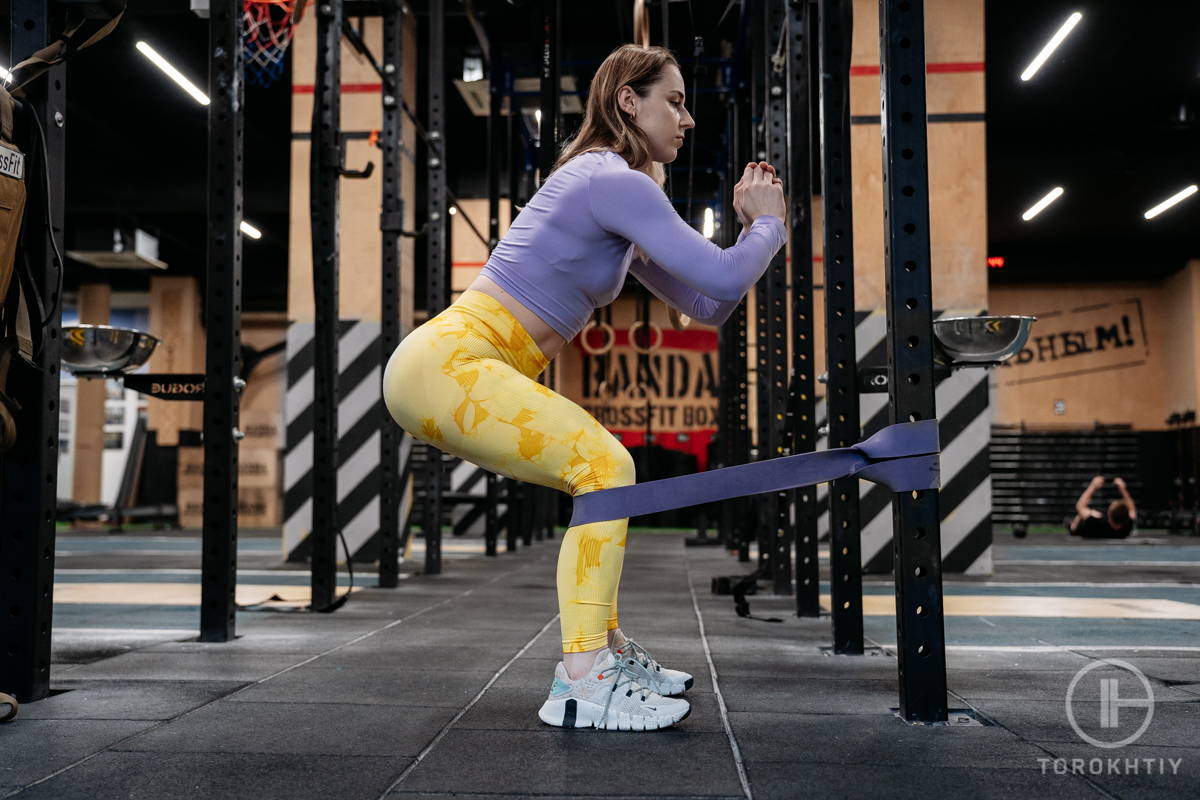
6. The Strength Curve
While performing bodyweight or barbell squats, you’ll find it easy standing up with the weight on your shoulders. But, it gets difficult as you go down, and the most difficult part is when you reach the bottom of your squat, and you have to push yourself up. Gradually, you get to the top of your squat again. The top of the squat is the strongest part, and the bottom of the squat is the weakest.
While performing banded squats, the strength curve is altered. Unlike bodyweight and barbell squats, you’ll find that the top position is harder because the resistance of the band increases when you stand up.
7. A Great Warmup Exercise
If you’re an athlete or somebody who takes their weight training seriously, you’ll benefit greatly from banded squats. You can perform the exercise before you get into an intense leg workout. It will be a great way to warm your muscles and charge yourselves up for a legendary leg day.
8. A Safe Exercise
If you have lower back pain, it probably stems from having weak glutes and hamstrings. When you perform squats with a resistance band, your lower body muscles will be strengthened, which will also help in preventing injury. All in all, your lower back problems will be solved over time, given that you keep your form in check.
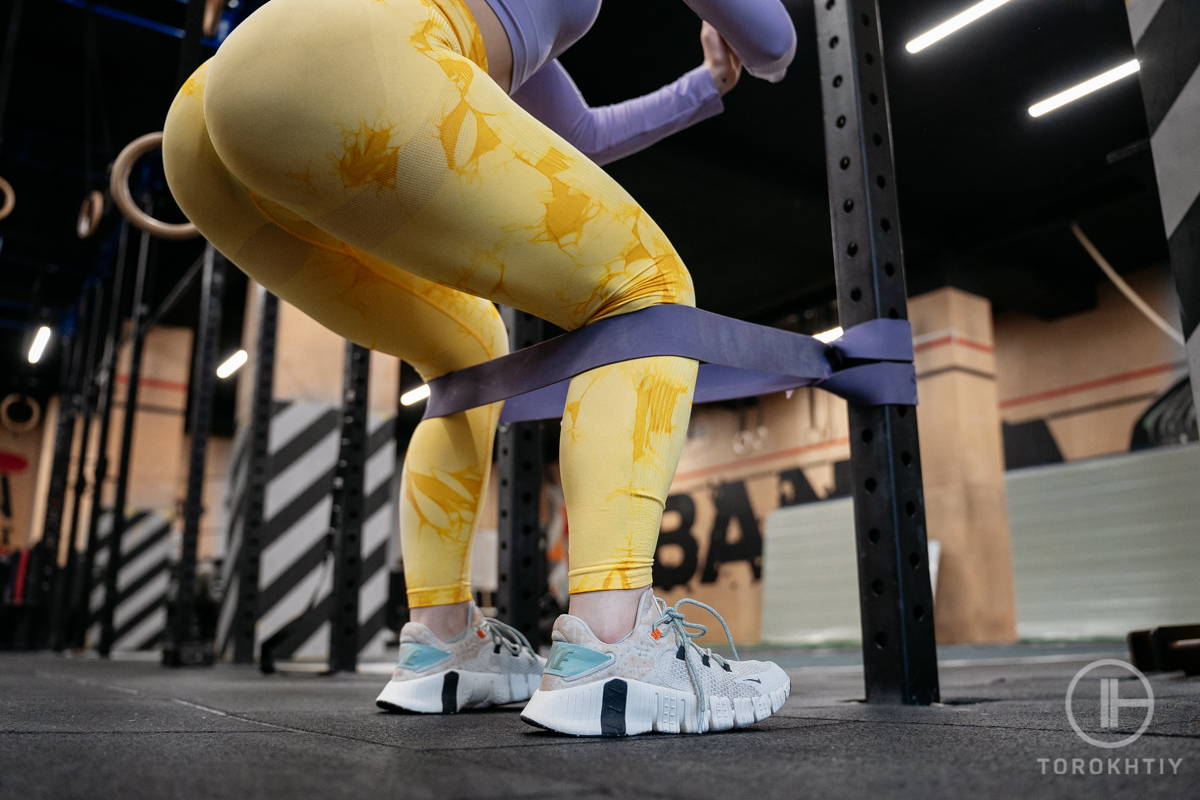
9. A Convenient Exercise
Biggest of all, banded squats are a highly convenient and affordable exercise. If you don’t have time to hit the gym, if you can’t afford a gym membership, or if there isn’t a gym near you, you can always order resistance bands and workout from home. They aren’t so costly, and there’s almost no setup involved.
Even if you are away from your home, maybe on vacation or on an official tour, but you don’t want to miss out on your workouts, you can take the resistance bands with you and workout whenever you get time. For barbell squats, you need a lot of space, a squat rack, and multiple weight discs. Then, you need to set it up, add all the weights, and remove the weights when you’re done. If you go to a gym, then you need to travel to that place as well.
The answer to the question, “where to put resistance band for squats?,” is simple. With resistance bands, you only need to warm up, wear them above your knees, and you’re ready to go.
Top Squats Exercises with Resistance Bands
There are plenty of squat exercises that can be performed with resistance bands. To properly learn how to squat with resistance bands, it is important that you go through the step-by-step guide to performing each of these exercises. Here are the best exercises and variations of squats with exercise bands.
1. Sumo Squats with Resistance Bands
Sumo squats are one of the best exercises for your glutes. This exercise is very similar to the regular squat, but it focuses more on the glutes. Here’s how to perform it.
- Stand with your toes pointing outward at a 45-degree angle and feet a bit wider than hip-width. Then, place the resistance band right above the knees.
- Now, push your hips back and bend your knees as you do in a regular squat. Keep going down till your hips are parallel to the floor. Hold the position for a couple of seconds.
- Then, slowly get back up while pushing from your heels and squeezing your glutes.
- Perform 3-5 sets of 8-12 reps for best benefits.
2. Goblet Squats with Resistance Bands
The goblet squat is also similar to the standard squat, but the difference is that the goblet squat focuses on keeping your body low to the ground. All in all, it focuses on your glutes, calves, quads, and core at once. Here’s how to perform a perfect goblet squat with resistance bands.
- Stand with your toes pointing slightly outward and feet a little wider than hip-width. Set the resistance band under your feet, holding the ends of it with your hands.
- Bring the ends together in front of your chest, the way you’d do with a dumbbell goblet squat.
- Start lowering yourself and go as low as possible (comfortably). Hold the position for a couple of seconds.
- Slowly rise up by pushing your heels against the ground, and squeeze your glutes while you’re at it.
- Perform 3-5 sets of 8-12 reps at a controlled speed for best results.
3. Pulse Squats with Resistance Bands
If you do not know what a pulse squat is, it is basically a standard squat with an additional step before you get up. Let’s see how to perform a pulse squat with resistance bands.
- Stand with your toes slightly pointing outwards and feet a little wider than hip-width. The loop should be slightly above your knees. You can keep your hands in front of you or on your hips while you squat.
- Inhale as you begin to go down. Slowly push your hips back and bend your knees as if you’re entering the sitting position.
- Keep going down until your thighs are parallel to the floor. You can also squat deeper (at an angle of 120-140 degrees) if needed, as it poses a greater challenge and leads to better muscle development. Hold that position for a couple of seconds.
- Before you gradually lift yourself back up into the initial position, raise yourself and pulse up and down for five seconds. Then, rise up while pushing from the heels and maintaining your posture. Squeeze your glutes while you do so, and exhale while you get back up.
- For best results, perform 3-5 sets and 8-12 reps of this exercise at a controlled speed.
4. Lateral Leg Raise Squats with Resistance Bands
If you’re a beginner, then this exercise could be a little challenging for you. Side leg lifts activate multiple muscles from your core to the glutes, hamstrings, hip flexors, and other muscles in the lower back region.
It is an amazing exercise for training your glutes, but it requires a lot of balance. Remember to keep your core engaged and back flat while you perform this exercise. Here’s how to perform a lateral leg raise squat with resistance bands.
- Stand with your toes slightly pointing outwards and feet a little wider than hip-width. The loop should be slightly above your knees. You can keep your hands in front of you or on your hips while you squat.
- Bend your knees, push your hips back and lower yourself into the standard squatting position. Inhale as you begin to go down and hold the position for a couple of seconds.
- Before you rise up and return to the initial position, lift one of your legs out to the side until you feel the resistance of your band. Then, slowly exhale and return to your initial position.
- Repeat the same process with the other leg and alternate the reps between both legs.
- Perform 3-5 sets of 8-12 reps of this exercise for best results.
5. Split Squats with Resistance Bands
A split squat is a unique variation of a standard squat that works both legs, impacting each one differently. It majorly targets the quads, glutes, and calves, but with resistance, it also targets your biceps and shoulders. Here’s how to perfectly perform a split squat with resistance bands.
- Stand with your feet a little wider than hip-width and take a step forward with any one of your feet and place the resistance band under the other foot. Then, hold the ends of the resistance band with your hands and keep them to the sides.
- Then lower your body until your knees are at 90 degrees. It is just like how you lower yourself for a lunge. One knee faces the ground while the other knee faces up.
- Push yourself back up to the initial position by pressing your foot on the ground against it. Don’t forget to squeeze your glutes while performing the movement.
- Perform the same exercise with the other leg forward, and alternate the reps between the legs.
- For best results, perform 3-5 sets of 8-12 reps of this exercise.
6. Anchored Squats
Anchored squats are performed with resistance bands. You need access to long free bands for performing this exercise. It is a very effective exercise that targets your lower body muscles while also putting the anti-rotational stability of your core to the test. Here’s how to perfectly perform an anchored squat.
- Tie your long free band to a solid structure, preferably a pole or a bench at the gym. If you’re at home, tie it to the knob of a door that’s tightly shut. The distance between the band and the ground should be around 90-120 cm.
- The other end of the band should be around your hips. Move ahead with your feet until you feel the resistance of the band.
- Once you align yourself and are in a stable position, squat down, bending your knees and pushing your hips back. The resistance band will automatically pull your pelvis behind as you go down and bend your knees.
- Work against the resistance, and do not let the band pull you back. Also, focus on maintaining proper form throughout the exercise.
- Hold the position for a few seconds before you rise up to the initial position.
- For best results, perform 3-5 sets of 8-12 reps of this exercise.
7. Barbell Squats with Resistance Bands
This exercise requires you to have a barbell squat rack and resistance bands. If you are a beginner and the weight is too challenging for you, it is best if you start with bodyweight squats and banded squats. Once you master that, you can get to this exercise, as the weights will be easier to handle now.
The barbell squat is already a very challenging exercise, and adding a resistance band to it makes performing the exercise even more difficult. If you can comfortably perform the traditional barbell squats, here’s how to perform the exercise with resistance bands.
- Place the loop above your knees just like you would for the standard banded squats. Now, perform the barbell squat.
- Approach the barbell rack and place the bar across your shoulders. Make sure the barbell is centered.
- Lift the bar off the rack and step back a few steps slowly. Now, lower yourself into the standard squatting position. Make sure you push your hips back, and your feet are slightly pointing outward, with the distance a little more than hip-width.
- Hold the position for a couple of seconds before coming back up and returning to the initial position.
- Perform 3-5 sets of 8-12 reps of this exercise with a manageable weight for best results.
- Lastly, avoid using resistance bands if you cannot safely perform the traditional barbell squat. The extra resistance can make things worse for you. It will divert your focus from squatting in proper form to the resistance, which could lead to severe injuries.
It would be best if beginners performed this exercise under the supervision of a gym instructor.
How to Pick Resistance Bands for Squats?
Depending on your requirements, you can choose from three kinds of resistance bands for performing banded squats. The types are as follows:
- Free Bands: These are long and thin, and you can easily tie them into a loop or wrap them around your feet to perform squats with bands. You can also tie them to another object in the gym for extra resistance. These bands can easily be used for both upper and lower-body workouts.
- Mini Loop Bands: These bands are shorter in length, and they are specially designed to be used for lower body workouts. You can wear them right above the knees while squatting. Mini loop bands are made using soft fabrics so that they don’t roll up while you exercise.
- Loop Bands: Loop bands can provide multiple levels of resistance according to your requirements. These are versatile and can be used for any muscle group. Just like mini loop bands, you can wear these bands above the knees while squatting.
Depending on your specific fitness goals, you should choose a resistance band that can provide more or less resistance while you exercise. For the ones that have various levels, the load is usually from 5-150 lbs. The goal here would be to choose a resistance band that makes your workouts challenging while also making sure that you don’t distort your form while you’re at it.
If it’s too easy, you won’t really feel it until you significantly increase your reps, and if the resistance is more than what you can handle, your knees might cave in while squatting. It could lead to injury.
Resistance Band Squats: Our Recommendation
Resistance bands are mostly sold in packs, and they have different difficulty levels. They are readily available in sports stores around you, or you can always buy a high-quality resistance band online, like the Echo Resistance Bands from Rogue Fitness.
Made from latex rubber, these resistance bands are incredibly durable. They have eight different levels of resistance distinguished by color.
The first three levels (0-2) offer light resistance and are for rehabilitation exercises and general conditioning. The next two levels (3 & 4) offer medium resistance and are ideal for performing squats and bench presses. The last three levels (5-7) offer high resistance and are perfect for athletes who want to make the most out of their compound movements (barbell squats, deadlifts, shrugs, leg presses).
All the bands are 41” in length, and you can choose and order a band from any level according to your fitness needs and goals.
Conclusion
All in all, resistance band squats is a highly effective exercise that is also very convenient and affordable to build lower body strength and muscle mass. If you have any resistance band squat variations, do let us know in the comment section!
Also Read:
- Resistance Band Tricep Workout
- Resistance Band Chest Exercises
- Resistance Bands vs Weights
- Resistance Band Lat Pull Down
- Best Long Resistance Bands
- Best Heavy Resistance Bands
- Best Resistance Tubes
- Resistance Band Back Workout
References:
- Banded Squats: Benefits and 9 Ways to Do Them // Healthline : https://www.healthline.com/nutrition/banded-squats#The-bottom-line
- How To Do The Barbell Curl For Biceps Size And Strength // Greatist : https://greatist.com/move/banded-squats#Bottom-line
- Here’s how you can take the benefits of squats to the next level with resistance bands // Hindustantimes :https://www.hindustantimes.com/health/here-s-how-you-can-take-the-benefits-of-squats-to-the-next-level-with-resistance-bands/story-vyUfApp2CtgQH7q8vNyxtO
- All photos are made by Torokhtiy Media team.
Why Trust Us?
With over 20 years in Olympic Weightlifting, our team does its best to provide the audience with ultimate support and meet the needs and requirements of advanced athletes and professional lifters, as well as people who strive to open new opportunities and develop their physical capabilities with us.
By trusting the recommendations of our certified experts in coaching, nutrition, dietology, and sports training programming, as well as scientific consultants, and physiotherapists, we provide you with thorough, well-considered, and scientifically proven content. All the information given in the articles concerning workout programming, separate exercises, and athletic performance, in general, is based on verified data. We ensure that you can rely on our professionals’ pieces of advice and recommendations that can be treated as personalized ones which will benefit you and fully meet your needs.
The product testing process is described in more detail here
Author: Tanya Shaiko
News Editor, Olympic Lifting Enthusiast
Best Results: Snatch – 61 kg,
C&J – 78 kg
I’m Tanya, and I just can’t do without fitness. About six years ago, I got into Olympic weightlifting and instantly fell in love with it. Weightlifting is like no other sport – it’s just you versus the bar. Driven by my unwavering passion for an active lifestyle, I’ve been eager to share my personal journey and sports enthusiasm with others. As a journalist and photographer, my interests come full circle, adding an extra dimension to the news column that I curate. This way, I keep my readers updated with the latest happenings in the sports world.

